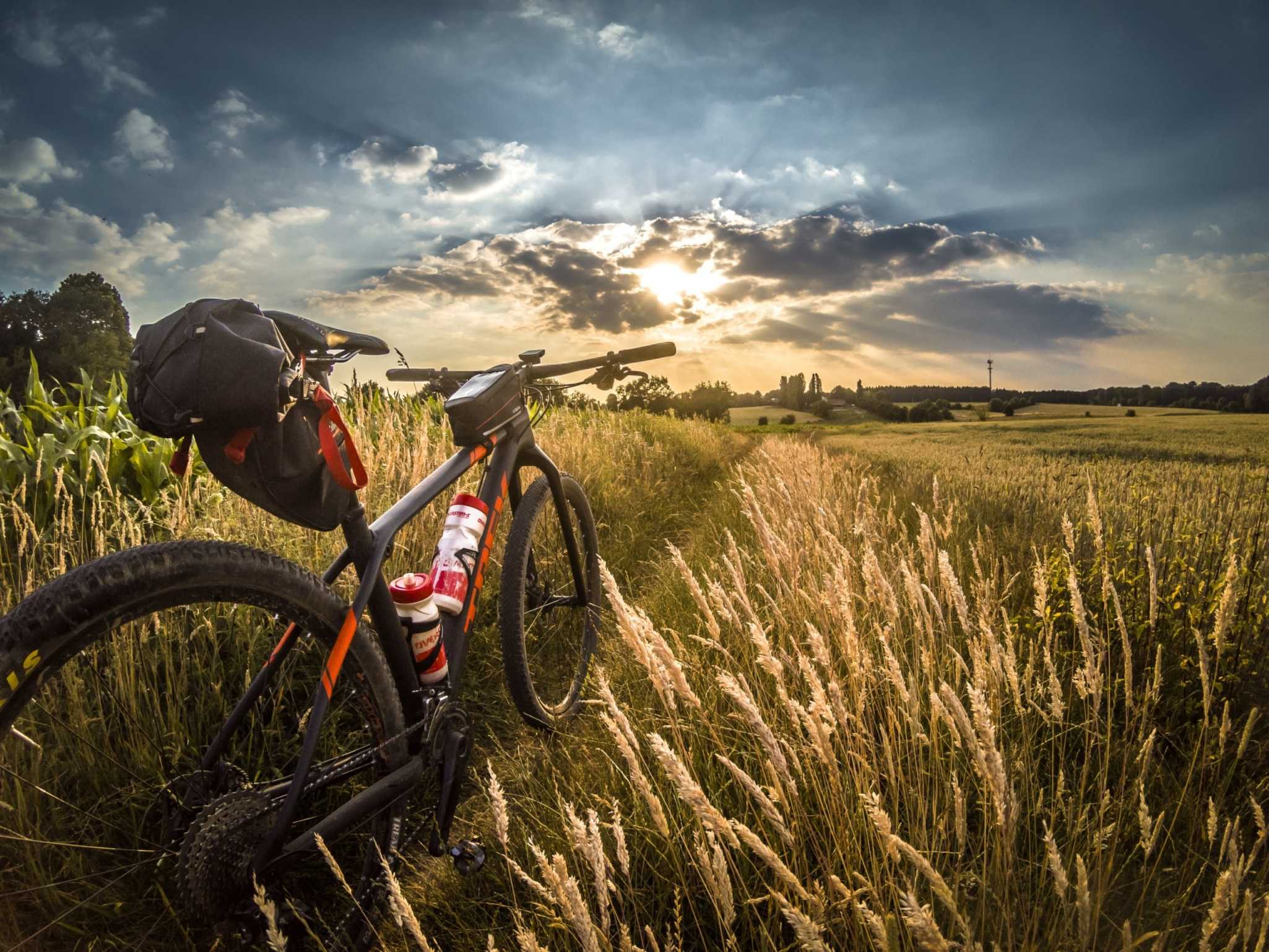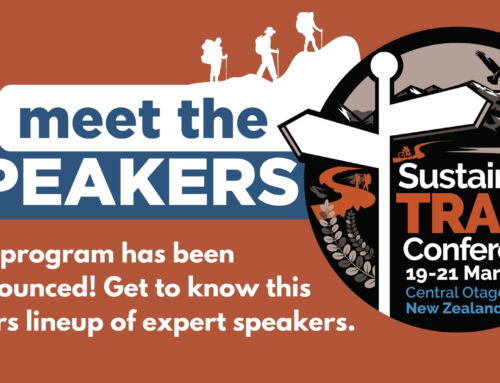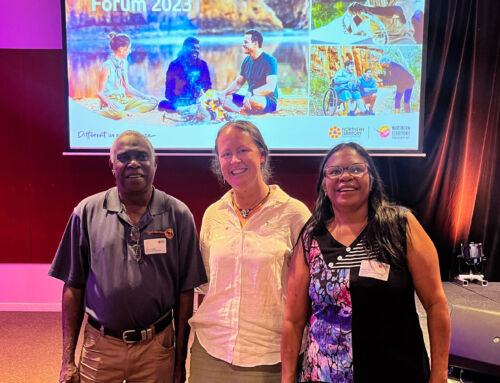Could a surge in the popularity of exploring backcountry regions by bike contribute to revitalising rural tourism, not to mention spur an increase in country-baked pie sales?
WORDS: Chris Ord / TRC Tourism
Much has been made of the influence of mountain biking tourism and its contribution towards reinvigorating rural townships and regions. Think Derby and St Helens, two sterling examples in Tasmania, or the small township of Warburton, Victoria, expecting plenty of car park crushes post its $12 million trail development being completed in the near(ish) future.
But what if you don’t have such great swathes of pure mountain wilderness to play with, yet your region still boasts natural attractions aplenty, stunning environments to explore, and delightfully un-trafficked dirt roads, all linking to quaint country towns with great bakeries and welcoming pubs?
Best, then, to get your tourism planning bods onto the notion of bikepacking (also known as adventure cycling), the latest outdoor pursuit to surge in popularity, and in doing so deliver an economic boost to local businesses willing to welcome adventure-hungry riders.
As bike sales go through the roof (a trend on song even pre-COVID) and people in droves jump back in the saddle to explore the simple pleasure of cycling through the countryside, there has been a significant uptake in a style of riding that places the experiential focus on slow-paced, multi-day journeys along back roads and fire tracks where the scenery is worth the 50-100km of pedalling each day .
The ride emphasis is on daisy-chasing points of interest – most often natural landscapes but also features of historical and cultural interest – along a route determined by less-trafficked, or even no-traffic roads, usually dirt, sometimes rail trails, but always through remote ‘back country’ places that deliver a sense of connection to nature.
There’s no racing, no time goal and often no boasting about ascent profiles. Bike packing is not as much an athletic or endurance endeavour, as one purely about the journey and the experience of travelling decent distances overland on two wheels in order to explore a place, region, state or, indeed, an entire country.
Bikepacking bikes tend to be hybrids of road and mountain, bred and engineered tough for rutted, pot-holed, mud splattered roads. They are able to carry plenty of gear for the multi-day nature of many trips, but also comfortably cover extended distances. Bikepackers are often self sufficient, staying at camping grounds and lugging all they need – sometimes including a kitchen sink (camping style). Increasingly, however, where the route and strategic location of townships allow (60km seems to be an ideal distance apart), riders head off sans tent and sleeping bag, preferring the nightly comfort of a pub, country hotel, motel or B&B accommodation and a cafe or restaurant meal en route. Getting a flavour of Australia’s rural villages and their growing tendency towards local produce gourmet meals, baked specialities, micro-brews, cellar door offerings and even gin distilleries, is as much part of the ride experience as the remote, crowd-less landscapes in-between.
While no hard statistical data has been recorded on the bike packing market, retailers of speciality bike packing cycles and gear report significant increase in sales and customer interest over the past few years, while the appearance of online media portals dedicated to the scene and the attendant growth in online communities dedicated to discussing routes and gear at least anecdotally signals a strong growth in bikepacking and its identification as a defined market.
Such growth has already been supported by the strategic development of significant cycle touring experiences in New Zealand with Tourism NZ’s Great Rides Program – featuring the likes of the Alps 2 Ocean Trail, Hawkes Bay Cycle Trail, West Coast Wilderness Trail, the Timber Trail and the Otago Central Rail Trail – delivering healthy tourism visitation and associated economic benefits to the towns and regions through which they pass.
A 2016 survey of The New Zealand Cycle Trail – a collection of 22 Great Rides across New Zealand – reported that an estimated 1.3 million users visited the Great Rides during 2015. The majority were domestic visitors, with international riders estimated at 13.5% (114,351).
The economic contribution of the cycle trails was estimated at $37.4 million, derived from user spend. The evaluation further showed that “the cycle trails helped revitalise small communities including historic hubs, increased and expanded the number of local businesses, and created jobs close to the locality of the trails.”
Australia is slowly catching on, most recently with the launch of the Central West Cycle Trail Route, a 400km+ loop making its way through the rolling landscape of woodlands and wheatlands of the Central West of NSW, and the land of the indigenous Wiradjuri nation. Cornerstones of the trail include Dubbo, Mudgee, Gulgong, Dunedoo, Mendooran, Ballimore, Geurie, Wellington and Goolma.
[Check a brief early-ride experience of the route posted on Bike Packing Australia.]
The trail was developed by local cyclists and a sub-committee of the Mudgee Bushwalkers and Bike Riders Inc., who, having cycled similar offerings across the globe and recognising the tourism potential, set about voluntarily defining a route, and creating the website and social media resource to promote it.
A quick search on the internet delivers plenty of other examples of multi-day ride routes that explore our own backyard, however most are curated ad hoc by individuals or small cycling communities and funnelled through popular user-generated cycling Apps such as AllTrails, Trailforks and the cycling tour operator-created CycleWayz. Very few are curated and promoted by tourism organisations or specifically designed to maximise both best user experience and best economic outcome for rural townships and their tourism-relevant businesses, nor are they often integrated into broader destination management plans or tourism marketing strategies.
With COVID19 powering a surge in bike sales, a likely extended focus on domestic tourism, a renewed demand for outdoor active and nature-based recreation (especially types that can be done with social isolation measures in place), and a sense of community altruism focused on supporting local businesses, tourism planning organisations and authorities could do worse than swing an eye to the rider munching heartily on a (gourmet) pie outside their local bakery, the one who seems to be packing a bunch of gear on their bike frame. After all, somewhere in that luggage is a wallet and the glint in their eye is one seeking a comfy bed for the night.







